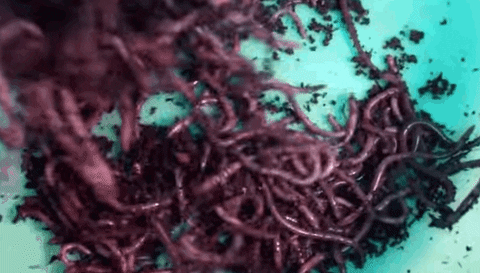Highly invasive jumping worms, a genus introduced from eastern Asia, found in 15 states.
These worm deplete topsoil of nutrients and make it difficult for fungi and plants to grow.
The following written content by Elizabeth Gamillo

The highly invasive jumping worm, a genus introduced from eastern Asia, now writhes within the topsoil of more than a dozen states in the Midwest. After jumping worms feed their insatiable appetites, they leave behind loose, granular soil the texture of coffee grounds. This altered soil can no longer retain moisture, lacks nutrients and quickly erodes, jeopardizing gardens and forest ecosystems, reports Will Cushman for PBS Wisconsin.
The jumping worms may have been brought to North America in the 19th century with plants and other imported horticultural and agricultural materials. Since then, the worms have spread. As of 2021, the invaders can be found in Wisconsin, Missouri, Illinois, Iowa, Minnesota, Nebraska, Ohio, Texas, Louisiana, Indiana, Kansas, Indiana, Kentucky, Tennessee and Oklahoma, reports Jason Murdock for Newsweek.
The invasive worm resembles the more common European nightcrawler but is slightly smaller, a brownish color rather than pink and appears sleeker and smoother, reports Newsweek. The segmented invertebrates are also known as Asian jumping worms, crazy worms, Alabama jumpers and snake worms. As their various names suggest, the worms thrash and snap their bodies intensely like a rattlesnake when touched or held, can spring into the air and even shed their tail to escape, PBS Wisconsin reports.
The jumping worm’s ability to reproduce without mating, proliferate quickly and lay eggs that resemble the soil are a few qualities that make the worm extremely invasive, reported Cindy Dampier for the Chicago Tribune. As the worm rapidly depletes topsoil of all nutrients, it outcompetes native fungi species and other non-native worm species, PBS Wisconsin reports. As a result, native plants in the Midwest that once grabbed hold of the region’s heavy clay topsoil may have a harder time growing. “Plants need that layer in order to germinate,” says Brad Herrick, an ecologist at the University of Wisconsin to the Chicago Tribune, “and trees need it in order to survive.”
While adult jumping worms do not survive frigid midwestern winters, their egg casings do, Newsweek reports. Currently, no viable methods to control the spread of the jumping worms or rid them from already infested forests exist, reports PBS Wisconsin. Read more from Smithsonian Magazine.





